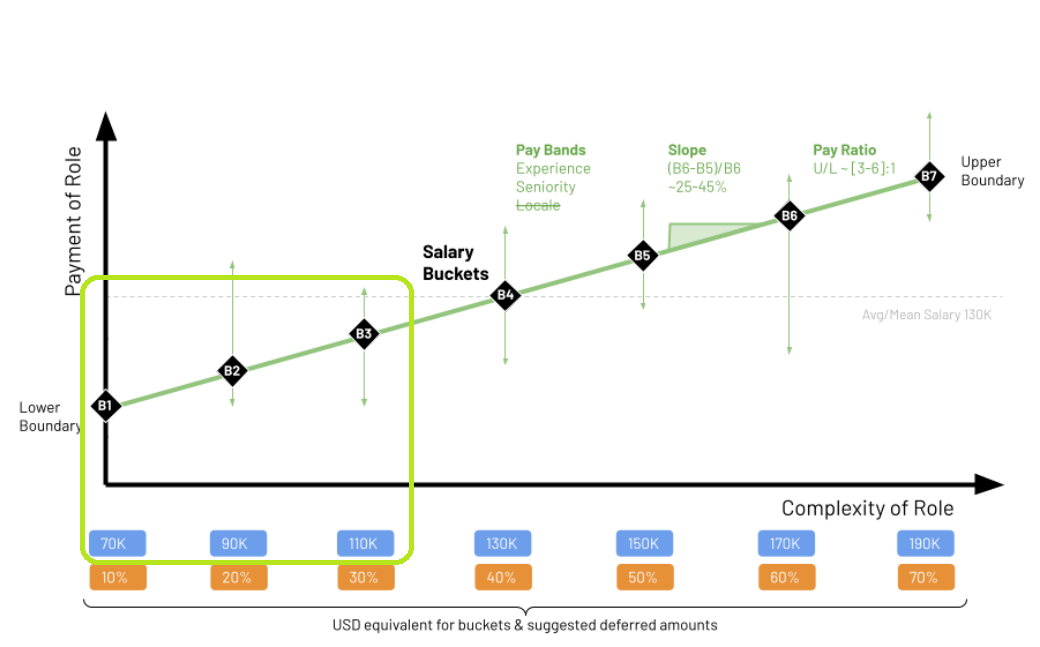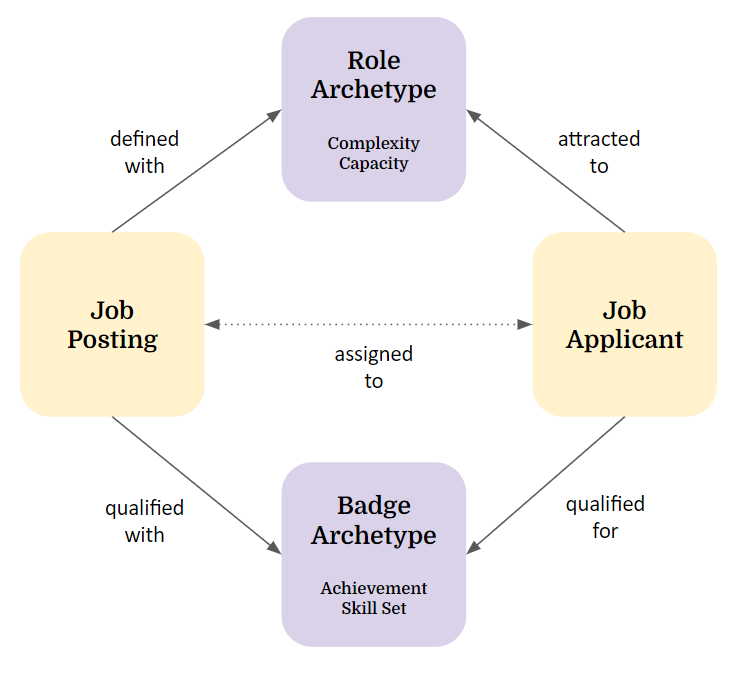Samara's Compensation Model
Premise
Compensation
The compensation in Samara is based on a token mix that consists of SAMARA equity/value, SVOICE voice token, HUSD - USD equivalent and possibly SEEDS (if the organization has a reserve). This mix is determined by a "formula" that converts the USD Equivalent into the right mix of tokens. See the Samara Token page for more details on each of the tokens in use.
Compensation for contributors
Currently every contributor to Samara is compensated in the following way:
- 1$ contribution can be compensated with 1 SAMARA or with 1 HUSD (these are the only two token types currently available in Samara)
- Contributors request the HUSD they need to cover their fiat needs (This is intended to allow people to free up their energy and be able to contribute to Samara by covering the living costs they would otherwise have to invest elsewhere to get)
- The rest of their contribution (Total contribution - HUSD amount) is compensated in SAMARA, multiplied according to the multiplier in place at a specific time
- Contributors choosing to get compensation in SAMARA and taking the risk of the future uncertain value of SAMARA are compensated more (based on the multiplier) for the trust and willingness to accept SAMARA instead of HUSD which can be used immediately.
Example:
- One contributor has a 5,000$ contribution in a lunar cycle and he needs 1,000$ HUSD as fiat needs.
- The 5,000$ contribution is made by 1,000$ HUSD and 4,000 SAMARA;
- The 4,000 SAMARA are being multiplied by the current multiplier (1.8 at this stage), so 4,000 x 1.8 = 7,200 SAMARA
Compensation for investors
1$ investment = 1 SAMARA, multiplied according to the multiplier in place at a specific time.
Current distribution of tokens to contributors and investors
The current way Samara allocates tokens is through this spreadsheet (Compensations sheet) .This is far from ideal but works as a record of all the contributions to Samara. It details contributions and tokens for each month or for a specific lunar cycle, and the exact amounts of SAMARA, HUSD and SVOICE.
Salary Bands
Defining a salary for a role is an extremely difficult task to do. There are many, many variables playing a part in the decision to find a fair and equitable salary for everyone in the organization.
For these early stages Samara is using three salary bands, namely B1 ($70k/year), B2 ($90k/year) and B3 ($110k/year). These bands are directly connected with the commitment levels, B1 for up to 49%, B2 for 50% - 79% and B3 for over 80%. 
Commitment
We define commitment as “mindshare” (not how many hours per week you work in an assignment). For example, a commitment level of 100% is equivalent to having your awareness being fully present and focused on a single assignment.
Members propose their commitment at the start of the cycle period and self-assess their actual contribution level after the cycle period ended and can then adjust the levels up or down to reflect personal changes in the contribution or based on the results of the Collective Evaluation process.
The Collective Evaluation process is a Community building exercise where at the end of a cycle the team comes together to assess each-other contribution.
Minimum commitment in Samara is 30% for regular assignments. Please note that your total level of commitment for the sum of all assignments cannot exceed 100%.
Future models for role and badge archetype
The goal is to match qualified applicants with open job postings. In traditional job markets, this process is overtaxing, one-sided, prone to trial & error and a guessing game between pretense & perception. In a decentralized human organization, we are using role archetypes as attractors for applicants and badge archetypes as qualifiers for applicants to optimize the matching process and to reduce biases. Role archetypes represent the complexity of the job and the capacity of the organization to fill in positions (e.g. the organization might have room for 5 storytellers at a complexity level of B3). Badge archetypes represent achievements and skillsets of applicants. Both archetypes are used to find the right applicant for the assignment.

